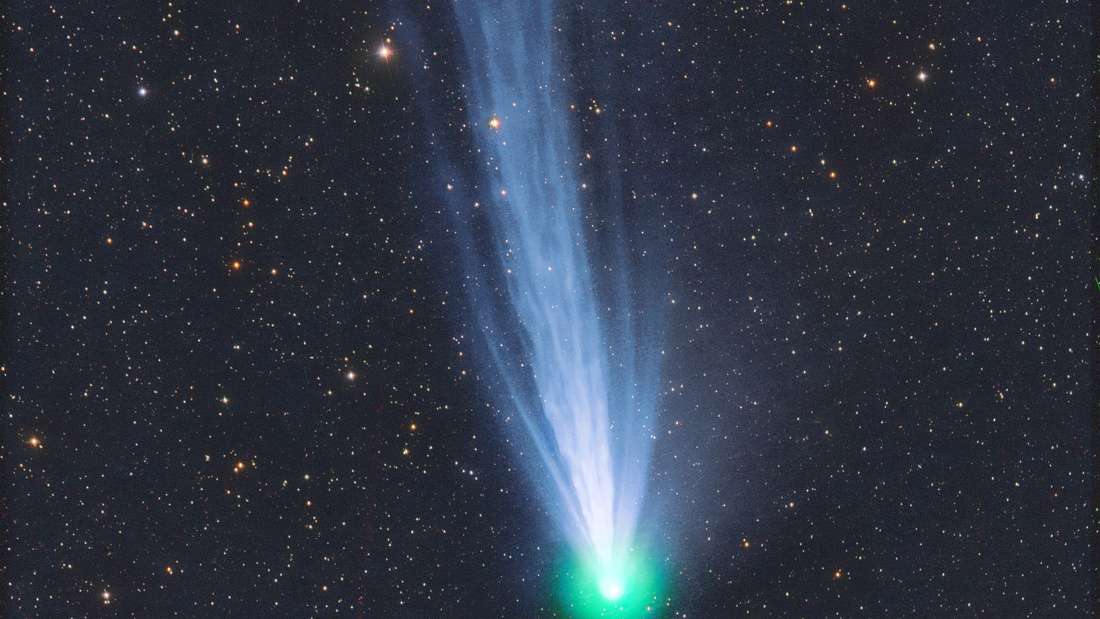Press
Up to Jupiter and then to the right: With a lot of luck, the comet 12P/Pons-Brooks can be seen in the Korbach sky for a few more days; the next time it will come close to Earth again will be in about 71 years.
Korbach – Hobby astronomer Heiko Mehring is lucky: On Wednesday afternoon the sky was still gray and overcast, but it cleared up in the early evening. On the northern outskirts of Goldhausen, Lengefelder sets up his telescope around 8 p.m. The location is elevated and the visibility to the west is good.
The twilight is still too bright to see stars, only the narrow crescent of the waxing moon shines. Comet 12P/Pons-Brooks will be visible directly below in just over an hour, with Jupiter shining to the left of it. The moon and the largest planet in the solar system together provide a good guide in the sky to locate the rare guest more than 240 million kilometers from Earth.

The comet becomes visible for the first time at around 9:15 p.m. It can hardly be seen with the naked eye, but normal binoculars are enough to spot it as a blurry speck in the night sky. “From Earth, it appears to be in the constellation Aries, near Jupiter and Uranus. As I said, apparently in the vicinity of these objects, but that is purely in perspective,” explains Mehring.
12P/Pons-Brooks is much easier to see in a telescope than in binoculars: initially as a large, foggy spot. Later, when it gets even darker, the tail can also be seen. The visibility conditions are not optimal on this day: the air in the atmosphere is shimmering. In any case, the time window for observing the comet is getting smaller and smaller. Over the next few days it will pass under Jupiter until it can only be seen from the southern hemisphere from the end of April.
The closer 12P/Pons-Brooks gets to the horizon, the more the visibility becomes clouded by the layers of air near the horizon. Plus, every day it stays bright longer, and by the time it’s dark enough to see the comet, it’s gone from view again.
The chances of being able to observe him from Korbach are therefore rather slim. In addition, other conditions must be right: clear sky, as clear a view of the horizon as possible and a dark place. The latter is particularly important because “light pollution” has a double impact, as Mehring explains: the scattered light from street lamps, for example, outshines many relatively faint celestial bodies. In addition, bright light sources disrupt the so-called “dark adaptation”: This refers to the adaptation of the eye to the darkness.
The good news for all stargazers: Comet C/2023 A3 (Tsuchinshan-ATLAS) can be observed as early as October, which will probably be significantly brighter and therefore more noticeable than 12P/Pons-Brooks.

